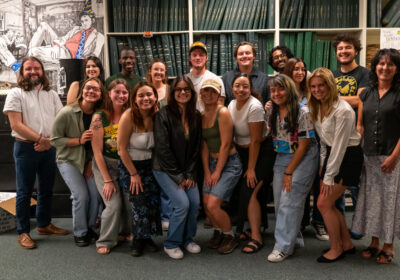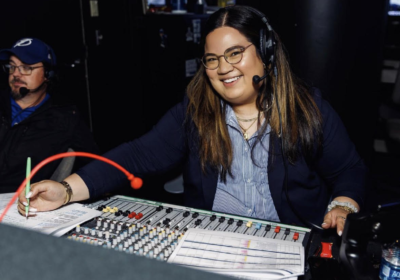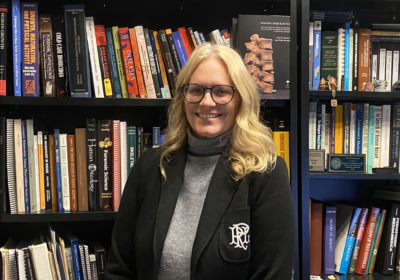‘Ravens’ takes dramatic peek at women through the ages
If there is one thing that “Ravens” director Helen Tennison said she wants audience members to leave with, it is the idea that everybody should take the risk to be their best selves.
That is the overarching theme of USF’s Theatre and Dance Spring production of “Ravens.”
The original play was assembled in early January in a collaborative effort among the talented cast, Tennison and writer Kate Kerrow for this semester’s British International Theatre Production.
The play drops audience members into the lives of three very different female leads.
They are alike, however, in their yearning to break free.
The themes of constraints and a desire to transcend societal norms take form in “Ravens” with the characters facing issues such as family, sexuality and the expectations placed on women over the course of time.
The issues that women face are especially striking as the play introduces all three
leads in their respective time periods.
The first story we are introduced to is that of the Schafer sisters, who reside on a family farm in rural Tennessee in 1858. The audience meets the sisters as they grieve for their recently deceased father. Their mother having died many years before, they are left orphans.
The middle sister, Marian, is desperate for a male head of the house. She is a young woman torn between bitterness and the desire for her uncle to become the man of her house, despite her sister’s protest. This bitterness bleeds through brilliantly by first-time performer Jenna McCarthy, a senior majoring in
communications.
In her performance, McCarthy uses sunken expressions and speaks in a subtle Southern accent that sounds as if she is unleashing anger deep from within.
“Marian is a conflicted character,” McCarthy said. “She truly believes that having her uncle run the house will let her be the woman she believes she needs to be.”
When the Schafers leave, the audience is welcomed with a fascinating transition sequence that allows for a smooth shift of tone and characters.
The second story, set in 2014 Tampa, introduces Carmen Hernandez — a bride-to-be. The Hernandez clan and family friend Zola bring a welcomed humor and lightness to the show. Still, there are clear struggles within her family as Carmen fights her urge to travel and break free of the dress that weighs her down from accomplishing her dreams.
After seeing glimpses of a flapper through transitions, the year becomes 1926 and the audience is presented with the life of headline cabaret artist Ida and her adoring fan Cora.
“Ravens” uses 1926 to show audiences that as recent as the 20th century may be, racism and homophobia kept many people chained down from being their true selves.
Ida’s story develops with a tremendous and talented display of emotion by Kaena Hood, a senior majoring in theatre.
“Ida gets the opportunity to challenge society’s view of her,” Hood said. “Ida is one of those people that is not scared of change. I hope to take some of Ida with me even after the production is over.”
The cast of “Ravens” is given the opportunity to make drastic changes in tone as many appear in multiple roles through the shifts in time periods. This is most evident when comparing the melancholic 1858 Schafer family with the loud and, at times, hilarious Hernandez family.
With visual and audio transitions that are sure to entertain crowds, Sound Designer Matt Eaton and AV Designer Eva Auster craft effects that allow the audience to move their mindset from one era to another easily.
“The incorporation of silhouettes and projections are not just for show or the sake of looking nice,” Tennison said. “The projections speak to the audience in a different way. The visuals of the show help to flesh out scenes and at times allow the audience to become submerged with the characters.”
The collaborative effort among the cast and crew comes through with the natural deliveries and incorporating improvisations. Over a month of story development allows “Ravens” to let audiences believe the characters are experiencing each moment for the first time.
“Ravens” is full of messages and ideas to walk away with. Hood said she hopes the audience will follow in her character’s footsteps.
“I hope they understand the theme of transformation, change, growth, being fearless and challenging the norms,” Hood said.
“Ravens” will begin showing tonight at 8 in Theatre Arts Rehearsal 120. Tickets start at $8 for students and $12 for general admission. For more dates and times, visit boxoffice.arts.usf.edu.







